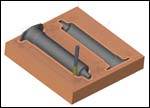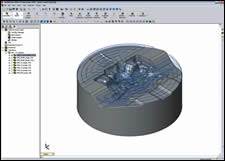Learning the Key to Gaining Control over the Entire Production Process
Optimize your tool shop processes by bringing design in-house.
Advance Mold has been making plastic injection molds for more than 30 years. Today, the company has 37 employees occupying a 53,000-square foot facility in Livonia, MI. Advance’s customers include some of the largest automotive OEMs as well as their Tier 1 and Tier 2 suppliers.
Advance’s in-house capabilities include design, manufacturing and sampling of prototype and production molds, providing customers with a one-stop, quick turnaround solution from design to finished product, including injection molding for low-volume and service parts.
Advance prides itself on the close relationships with its customers, which keeps customers coming back. Ellery Makowski, who is in charge of the company’s sales, explains, “We get involved with our customers early on so we can offer suggestions for better part designs. We have a unique open door policy, so our customers can walk right into our shop, talk to the machine operators and see how their job is progressing. Our customers know our people by name and our people know our customers so they have a personal interest in keeping the customer happy.”
An example for the vested interest Advance sees in working closely with its customers is a new initiative the company is launching these days, offering free workshops to better educate its customers on the issues involved in mold manufacture and molding.
“Customers that have a greater understanding of how molds work will be able to design parts that can be better manufactured—quicker, with higher quality and longer tool life,” says Makowski. “If we can help our customers come up with better design for manufacturability it is a win-win proposition for both of us.”
Challenges
Working closely with the customer means that Advance must be responsive to their needs. “Our customers are under pressure to streamline their manufacturing processes, which means that we have to deliver our products quicker than ever,” says Ron Hoard, Advance’s Engineering Manager.
“As we looked at our entire process from quoting to delivery of the product, we identified some bottlenecks that were slowing us down,” says Hoard. “We didn’t have design capabilities in-house, so we used to outsource the design. The problem was that we didn’t have enough control over our entire process. We were relying on someone else to deliver a key piece of the final product. There was too much back and forth between our moldmakers and the designers to make sure we got the design the way we wanted it, not to mention the data translations we had to go through.”
|
Challenges
Solution
Results
|
Solution
“We realized that in order to optimize our tool shop processes we had to bring the design in-house,” continues Hoard. Now it was the question of which package to use for design. “Keeping in mind that our ultimate goal was to shorten the entire delivery cycle, we looked for a package that would help us do things quicker; not only for each task, but also for the entire process.”
“We tried a number of packages, but as we started working with Cimatron, we immediately realized that it was helping us do things quicker and better,” says Randy Rickard, Advance’s CAD/CAM lead. “We realized that by having a single package for design and manufacturing we can streamline the process and better integrate our production knowledge into the design of the mold.
“Change is always a challenge, and there is always a ramp-up time until people get used to something new,” continues Rickard. “Cimatron’s technical resources worked with us at every step of the way to smooth out the transition. Once our people started seeing how the software was making their jobs easier and the kind of support they were getting from Cimatron, they quickly became ‘converts’.”
Results
“Doing the design in-house gives us better control over the entire process,” says Hoard. “We no longer depend on an outside designer who is not a moldmaker.”
Now that the design is done in-house and everybody is working in the same software, Advance can bring its machining knowledge into the design phase. “All of our mold designers have previous experience working on the shop floor, and our moldmakers have direct access to the design early in the process,” says Rickard.
Every mold shop has its own way of doing things, and so does Advance. “We can now do things our way,” says Rickard. “We can place the vents where we want them; we can insert ribbed areas that cannot be cut; we can create larger radiuses in corners that can be hard milled versus EDM so we can build the mold faster. We also use Cimatron’s libraries to set up the tools we use and save some valuable time.”
Cimatron also helps Advance communicate better with its customers. “We can use Cimatron’s Quick Split to show them things like the split line and any undercut conditions,” says Makowski. “This helps them visualize how things work, which in turn would help them design a part that can be manufactured correctly the first time around.”
“Overall, the tight integration of design and machining enables us to come up with better designs and streamline the transition from design to manufacturing,” summarizes Hoard. “It helps us optimize the entire process so we can serve our customers quicker and at a lower cost.”
Related Content
Think Safety: Eliminate Hazards Throughout the Shop
The tooling community is taking advantage of new products for safer mold shops and molding facilities.
Read MoreOEE Monitoring System Addresses Root Cause of Machine Downtime
Unique sensor and patent-pending algorithm of the Amper machine analytics system measures current draw to quickly and inexpensively inform manufacturers which machines are down and why.
Read MoreEditorial Guidelines: Editorial Advisory Board
The Editorial Advisory Board of MoldMaking Technology is made up of authorities with expertise within their respective business, industry, technology and profession. Their role is to advise on timely issues, trends, advances in the field, offer editorial thought and direction, review and comment on specific articles and generally act as a sounding board and a conscience for the publication.
Read MoreMaking Mentoring Work | MMT Chat Part 2
Three of the TK Mold and Engineering team in Romeo, Michigan join me for Part 2 of this MMT Chat on mentorship by sharing how the AMBA’s Meet a Mentor Program works, lessons learned (and applied) and the way your shop can join this effort.
Read MoreRead Next
How to Achieve Tool Shop Optimization
A five-step methodology to face your delivery, quality and cost challenges head on.
Read MoreSeamless Integration Between CAD and CAM Applications
How to avoid “walls” between mold design and manufacture.
Read MoreReasons to Use Fiber Lasers for Mold Cleaning
Fiber lasers offer a simplicity, speed, control and portability, minimizing mold cleaning risks.
Read More
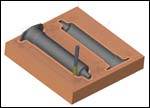
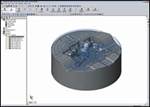



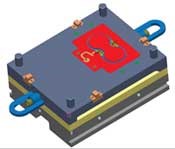
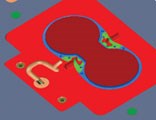
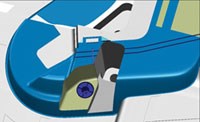
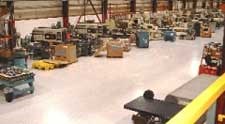
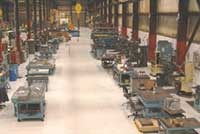








.jpg;maxWidth=300;quality=90)







